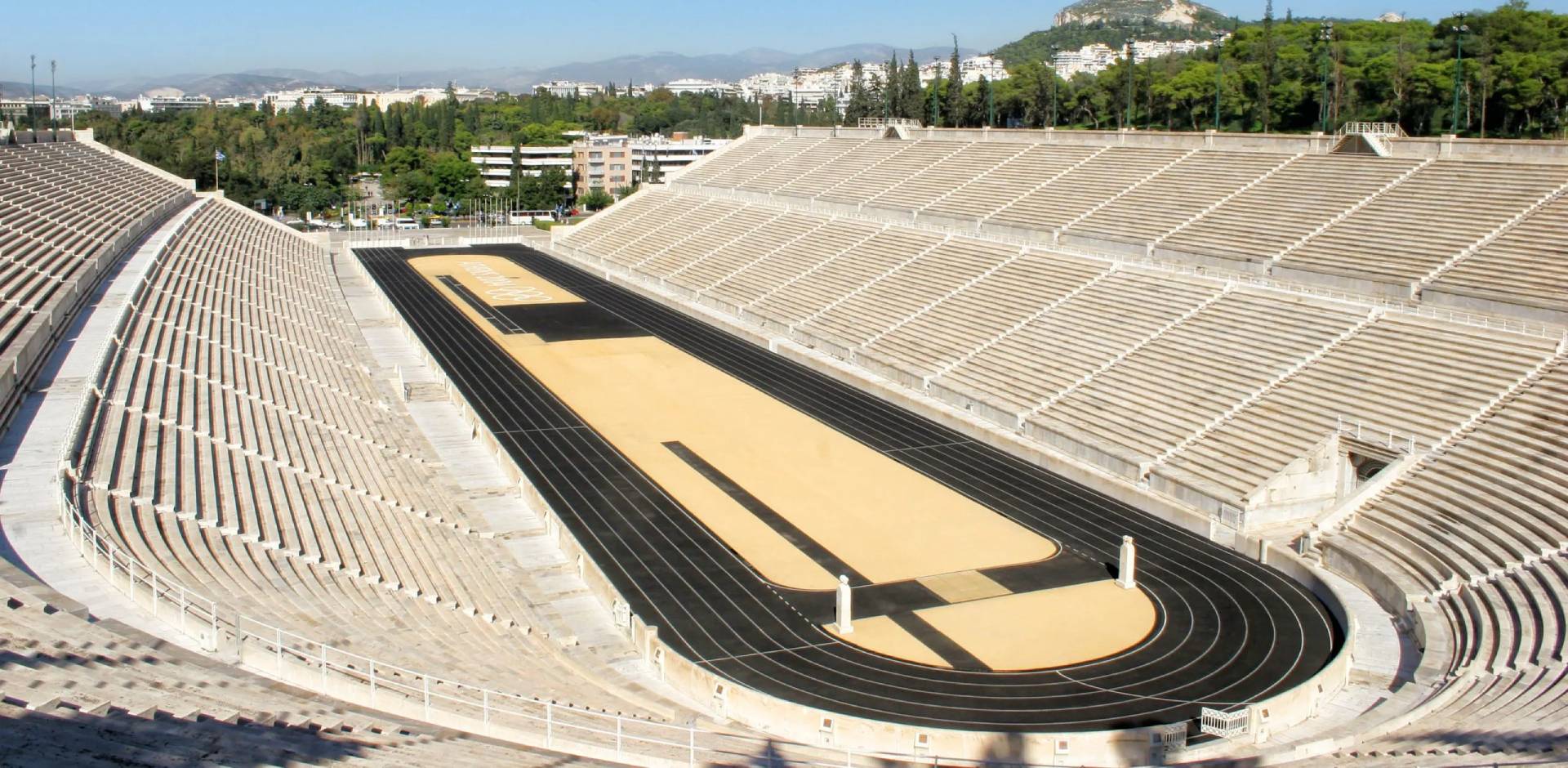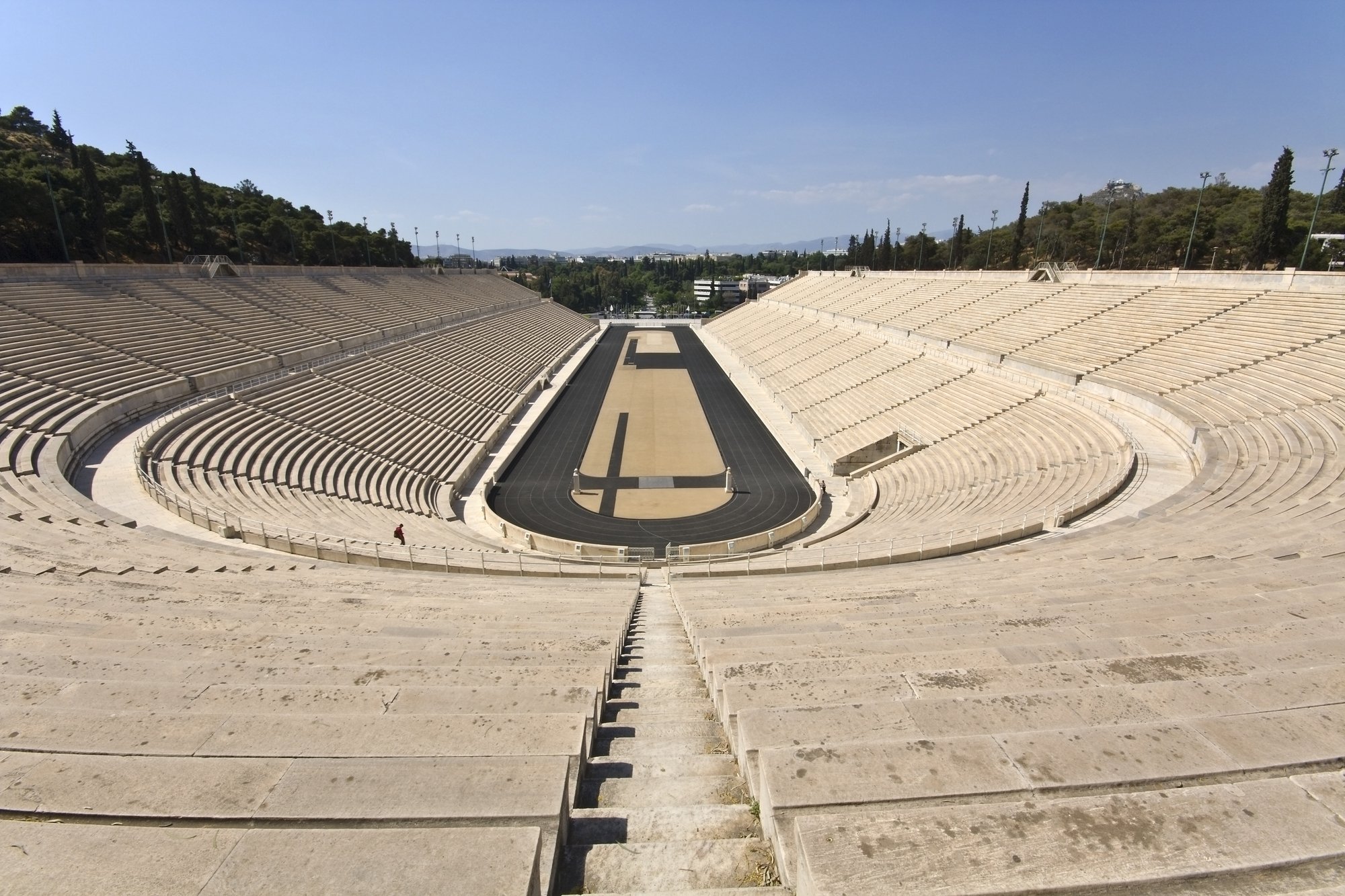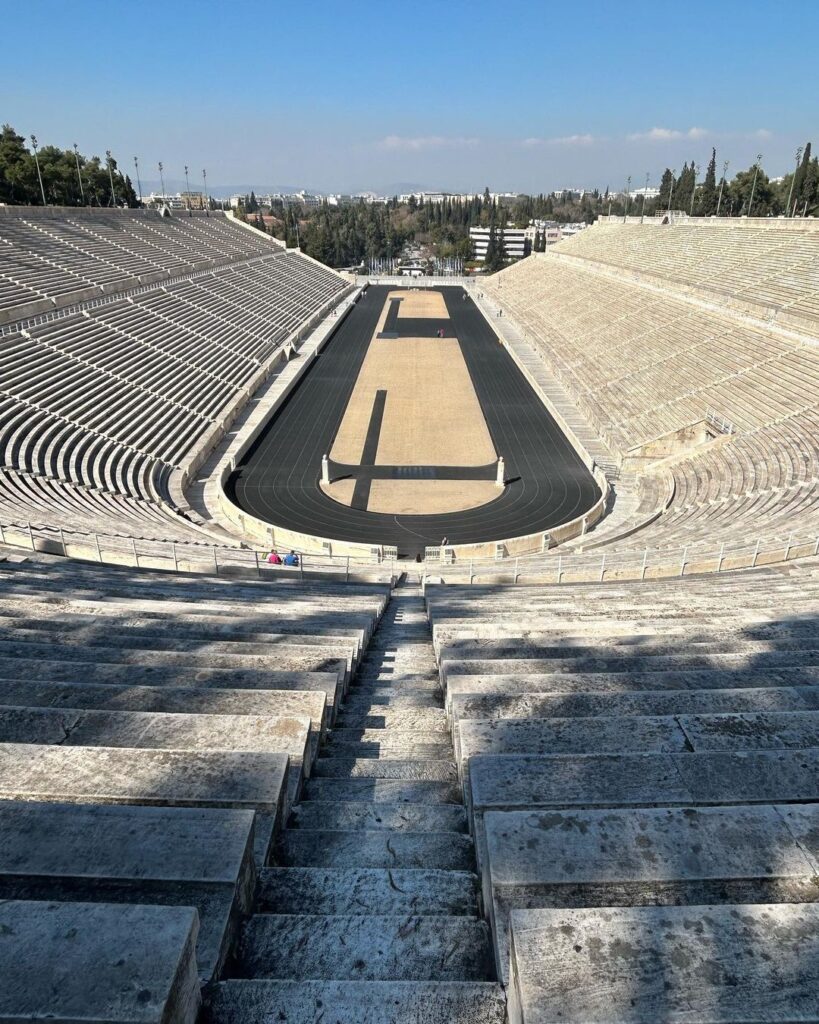Explore Panathenaic Stadium: Ancient Greek Glory

History and Significance of Panathenaic Stadium
Ancient Origins of Panathenaic Stadium
Welcome to the magnificent Panathenaic Stadium! Located in Athens, Greece, this ancient marvel is a historic site and holds immense significance in Greek culture.
The Panathenaic Stadium dates back to ancient times, originating in the 4th century BC. It was initially built as a venue for the Panathenaic Games, held every four years to honour the goddess Athena, the patron deity of Athens. The stadium was used for various sporting events, including footraces, Pentathlon, and chariot racing, attracting thousands of spectators.
Panathenaic Stadium's Role in Ancient Greek Culture
Step into the shoes of ancient Greeks as you explore the Panathenaic Stadium. Immerse yourself in this iconic venue's rich history and cultural significance.
-
Nurturing competition and unity: The Panathenaic Stadium served as a gathering place for Greek city-states, fostering a sense of unity and shared cultural identity. It was a site where athletes from different regions competed, showcasing their skills and promoting friendly rivalries.
-
Celebrating the goddess Athena: The Panathenaic Games held at the stadium were part of the larger Panathenaic Festival, which honoured Athena. The festival included various religious and cultural events, with the highlight being the procession leading up to the stadium. A new robe - the prestigious "Peplos" - was presented to the goddess.
-
Preserving tradition and heritage: The Panathenaic Stadium is a remarkable testament to Greece's ancient sporting traditions. Its unique horseshoe shape and use of Pentelic marble reflect the architectural styles of that era. Restoration efforts have been made to preserve its original form, allowing visitors to witness and appreciate the grandeur of ancient Greek architecture.
Today, the Panathenaic Stadium is a popular tourist attraction and a symbol of Greek pride. Visitors can explore the stadium's marble seating, walk along the track, and imagine themselves as ancient athletes competing in the historic games. Capture the breathtaking view from the stadium's seats, overlooking the city of Athens.
As you visit the Panathenaic Stadium, take a moment to appreciate its profound impact on ancient Greek culture. Experience the echoes of history and marvel at the impressive structure that continues to stand the test of time.
So, embrace the chance to explore the Panathenaic Stadium and immerse yourself in the glory of ancient Greece. Step into the footsteps of the past and discover a world filled with cultural richness and timeless traditions.

Architecture and Design of Panathenaic Stadium
Welcome to the magnificent Panathenaic Stadium, also known as Kallimarmaro! This is the perfect destination if you are a history enthusiast or simply someone who appreciates ancient Greek glory.
Structural Features of Panathenaic Stadium
As you step into the stadium, you can't help but be captivated by its grandeur. The Panathenaic Stadium is one of the most impressive structures of ancient Greece.
-
Horseshoe Shape: The stadium is designed in a horseshoe shape, which is unique compared to the traditional circular design of other ancient Greek stadiums. This shape allowed for better visibility and accommodated a larger audience.
-
Stone Seating: The seats of the Panathenaic Stadium are made of white Pentelic marble, creating a stunning contrast against the greenery and blue sky. The stadium could hold around 50,000 spectators, ensuring a vibrant atmosphere during events.
-
Track and Field: The stadium's track measures 204.07 meters long, and its width varies from 33.35 to 34.5 meters. The stone track was specifically constructed for foot races, emphasizing the importance of athletic competitions in ancient Greek society.
Significance of the Pentelic Marble Used
The extensive use of Pentelic marble in constructing the Panathenaic Stadium has great historical and cultural significance.
-
Symbol of Prestige: Pentelic marble was highly prized in ancient Greece due to its pure white colour and fine quality. The use of this marble in the stadium's construction was a symbol of wealth, power, and prestige.
-
Cultural Significance: The utilization of Pentelic marble in prominent public structures, such as the Parthenon and the Panathenaic Stadium, showcased Athens' cultural achievements during the Golden Age of Greece. It reflects the importance of arts, architecture, and athletics in ancient Greek society.
-
Link to Mythology: According to Greek mythology, Pentelic marble was associated with the goddess Athena, the patron deity of Athens. This marble was believed to have been created from the tears shed by grief-stricken nymphs upon the death of the Athenian hero Erechtheus. Using Pentelic marble to construct the stadium connected it to the city's mythical roots.
The Panathenaic Stadium is a remarkable testament to ancient Greek ingenuity and athletic prowess. As you explore its architectural marvels and soak in the historical ambience, you can't help but feel transported to a bygone era. Make sure to take a moment to imagine the roar of the crowd and the thrill of athletic competitions that once echoed through these hallowed walls.
Panathenaic Stadium Today
Welcome to the magnificent Panathenaic Stadium in Athens, Greece! Whether you are a sports enthusiast, a history buff, or simply looking for a unique experience, this ancient stadium is a must-visit destination. Let's dive into what makes this stadium so special and the exciting events it hosts today.
Renovation and Restoration Efforts
The Panathenaic Stadium, also known as the Kallimarmaro Stadium, holds a significant place in history as it is the only stadium in the world entirely built of marble. Dating back to ancient times, the stadium was first constructed in the 4th century BC, but it went through extensive renovation and restoration to recreate its former glory.
1896 the stadium underwent significant updates in preparation for the inaugural modern Olympic Games. The refurbishment was inspired by ancient Greek architecture and incorporated marble sourced from the nearby Mount Pentelicus. Today, the stadium is a remarkable testament to the grandeur of ancient Greek athletics and engineering.
Events Held at Panathenaic Stadium Today
While the Panathenaic Stadium carries a rich historical past, it continues to be a vibrant venue for sporting and cultural events. Here are some of the exciting activities you can witness at this iconic arena:
-
Olympic Torch Lighting Ceremony: The Panathenaic Stadium serves as the starting point for the Olympic Flame's journey, as it is kindled here before being carried to the host city of the Olympic Games. Witness the symbolic moment that ignites the spirit of the Olympics.
-
Sporting Events: The stadium hosts various sports competitions, including track and field events, marathons, and football matches. Be in the electrifying atmosphere as athletes compete on the same hallowed grounds celebrating ancient champions.
-
Cultural Celebrations: Beyond sports, the Panathenaic Stadium also provides a stunning backdrop for concerts, theatrical performances, and other cultural festivities. Immerse yourself in the ambience of artistic expression within this historic setting.
Visiting the Panathenaic Stadium allows you to immerse yourself in the rich history and cultural heritage of Ancient Greece. As you marvel at the impressive architecture and imagine the cheers of the crowds that once echoed through its marble walls, you can't help but feel a sense of awe and admiration.
Whether you're an admirer of Greek history or a lover of sports, a trip to the Panathenaic Stadium is an unforgettable experience. So, don't miss the chance to explore this ancient Greek glory and create memories that will last a lifetime.

Exploring Panathenaic Stadium
Guided Tours and Visitor Information
Welcome to Panathenaic Stadium, a historical landmark that will transport you back to ancient Greece! Located in the heart of Athens, this iconic stadium offers visitors a unique opportunity to immerse themselves in the rich history of the Olympic Games.
To make the most of your visit, it is recommended to join a guided tour. These tours are led by knowledgeable guides who will share fascinating stories and insights about the stadium and its significance. You will learn about the Olympic Games' history, the stadium's architecture, and the legends and athletes who graced its grounds.
The stadium is open throughout the year, and the entrance fee is affordable, making it accessible for both locals and tourists. It's important to check the opening hours before planning your visit, as they may vary depending on the season.
Notable Sights and Highlights within the Stadium
Once inside Panathenaic Stadium, you'll be captivated by its grandeur and timeless beauty. Here are some of the notable sights and highlights you won't want to miss:
-
The Track: Step onto the very track where ancient athletes once competed. The perfectly preserved marble track is an awe-inspiring sight and serves as a reminder of the stadium's rich Olympic history.
-
The Seating Area: Sit in the grandstand and imagine the crowd's roar as they cheer on their favourite athletes. The panoramic view of the stadium from the seating area is a sight to behold.
-
The Olympic Museum: Explore the Olympic Museum, located within the stadium, which houses a fascinating collection of artefacts and memorabilia from past Olympic Games. This museum offers a deep dive into the Olympic legacy, from historical photographs to medals and torches.
-
The Arch of Hadrian: Just outside the stadium, you'll find the impressive Arch of Hadrian, a magnificent marble archway that once served as the gateway to the stadium. It's a perfect spot for capturing memorable photos.
As you explore Panathenaic Stadium, take a moment to soak in the atmosphere and appreciate the magnitude of the Olympic Games that once took place within these ancient walls. It's an immersive experience that will leave you with a deep appreciation for ancient Greek glory.
So, visiting Panathenaic Stadium is a must, whether you're a history enthusiast, a sports fan, or simply curious about ancient Greek culture.

Tips for Making the Most of Your Visit
-
Take a guided tour: To appreciate the historical significance of the Panathenaic Stadium truly, consider joining a guided tour. Knowledgeable guides will provide interesting insights and anecdotes, bringing the stadium's story to life.
-
Explore the museum: Don't miss the chance to visit the stadium's museum, located beneath the grandstands. Here, you can admire an impressive collection of artefacts and memorabilia that showcase the stadium's history and role in the Olympic Games.
-
Climb to the top: Ascend the steep steps to the top row of the stadium and be rewarded with a breathtaking view of Athens. Capture this panoramic vista as a lasting memory of your visit.
-
Participate in a mock race: Experience the thrill of running in the footsteps of ancient Greek athletes by participating in a mock race on the stadium track. This unique opportunity allows you to feel the magnitude of this historic venue firsthand.
-
Visit during an event: If possible, time your visit to coincide with a sporting or cultural event at the stadium. Experiencing the vibrancy and energy of a modern-day event in this ancient setting will be an unforgettable experience.
The Panathenaic Stadium is not only a testament to ancient Greek ingenuity and athleticism, but it also serves as a reminder of the enduring legacy of the Olympic Games. As you explore this iconic site, you will undoubtedly appreciate the rich history preserved within its walls. So, lace up your walking shoes and get ready to embark on an extraordinary journey through time at the Panathenaic Stadium.
